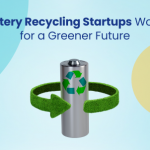Current energy storage solutions face challenges such as negative environmental impacts, geographical constraints, scalability issues, and long-term sustainability issues.
For instance, lithium storage requires rare earth minerals and poses recycling challenges, while pumped hydro requires large reservoirs and significant land use, limiting deployment.
One of the alternatives, Gravity energy storage, emerges as a promising solution, offering a novel way to store energy using the earth’s gravitational force. This method involves elevating heavy weights during excess energy production and releasing them to generate electricity when needed.
The technology is appealing due to its potential for high energy capacity, long lifespan, minimal environmental impact, and the ability to repurpose existing infrastructures such as disused mines and oil wells.
It further offers lower costs over the lifecycle, minimal geographical limitations, and a smaller environmental footprint. As a mechanical storage solution, it also avoids the chemical issues associated with battery disposal and the extensive land use required for pumped hydro.
This article explores five innovative growth-stage startups advancing gravity energy storage technology. These startups have the potential to grow rapidly, are in a good market position, or can introduce game-changing technology to the market in the next 2-3 years.
This makes them a great option to partner, collaborate, or acquire.
Interested in Energy Storage Trends? Fill out the form to get the report:
1. Gravitricity using MineShafts with GraviStore Technology for Energy Storage
| Founding Year | 2011 |
| Headquarters | Edinburgh, UK |
| Total Funding Amount | £4.1 Million |
| Last Funding Round/Amount | Equity Crowdfunding/£804.5K |
| Website | https://gravitricity.com/ |
Balancing the energy supply and demand using increasingly common intermittent renewable energy sources, like solar and wind, is necessary. The problem lies in storing excess energy generated during peak production times and releasing it efficiently during high-demand periods to ensure a stable energy supply.
To tackle this, Gravitricity developed the GraviStore technology, which harnesses gravity power storage by utilizing existing mineshafts. This system can support thousands of tonnes of mass to store electricity, functioning similarly to pumped hydro storage but with the benefits of a battery.

The technology has a lifespan of over 50 years without performance degradation. It goes from zero to full power in less than a second and can have high power output and extended operation times. Gravity storage has lower costs than lithium-ion batteries.
Gravitricity’s solution has high efficiency (around 80% round-trip efficiency) and energy/power ratio flexibility, allowing for storage durations from 15 minutes to 8 hours. Its system does not suffer from the depth of discharge limits, maintains high power output without degradation, and offers high availability (97%) with no standing losses. It also has an H2FlexiStore – Hydrogen Storage technology.
The startup is now led by Executive Chair Martin Wright. While this is his temporary position, he has continuously been a co-founder and chairman of Gravitricity since its inception.
His previous experience includes roles in entrepreneurial development, venture capital, marine energy, and maritime technology. He also serves as Chairman of the Association for Renewable Energy and Clean Technology.
Gravitricity’s latest funding of £804.5K was raised on March 29, 2023, from an Equity Crowdfunding round. The UK government and Innovate UK are lead investors.
2. Renewell Energy Developed a Mechatronic Energy Conversion System to StoreEnergy in Oil Wells
| Founding Year | 2020 |
| Headquarters | Bakersfield, California, United States |
| Total Funding Amount | $4.1 Million |
| Last Funding Round/Amount | Seed/ |
| Website | https://renewellenergy.com/ |
Millions of inactive oil wells across North America are sources of methane leaks and other pollutants. These abandoned wells represent an environmental hazard and a significant financial burden due to the high costs of permanently sealing them.
Renewell has developed a unique solution called “Gravity Well” technology, transforming idle oil and gas wells into efficient, green energy storage systems.
This technology uses a mechatronic energy conversion system to store energy by lowering a weight down the well shaft, converting potential energy into electricity with a regenerative winch mechanism.
The system is characterized by its low capital cost of $5 per kWh and operational cost, which results in a levelized cost of storage (LCOS) of $63 per MWh.
The startup technology uses existing infrastructure to achieve unprecedented storage efficiency and cost-effectiveness. The Gravity Well system leverages the depth of old wells (averaging about 5,200 feet) to increase energy storage capacity per kilogram of weight.
By sealing and repurposing these wells, Renewell’s technology mitigates methane emissions and can result in a net-negative carbon footprint. This approach transforms a costly cleanup challenge into a revenue opportunity for well owners.
Co-founder and CEO Kemp Gregory led this startup with his experience as a completions engineer at Shell company. He holds an MS in Energy Engineering from Stanford University School of Engineering.
Renewell Energy raised its latest seed funding on Jul 10, 2023.
Intrigued by these innovative startups?
Subscribe for more information on energy storage startups solving the core industry challenges.

3. Green Gravity and its Gravitational Energy Storage System is a Long-lived Energy Source
| Founding Year | 2021 |
| Headquarters | North Wollongong, Australia |
| Total Funding Amount | $985K |
| Last Funding Round/Amount | Early Stage VC/$985K. |
| Website | https://greengravity.com/ |
Green Gravity developed a gravitational energy storage system that moves heavy weights up and down in disused mine shafts. It utilizes the gravitational potential energy to store and release energy. This system is designed to be low-cost, long-lived, and environmentally friendly.
It uses no processed chemicals and suffers no performance degradation, which makes it a compelling alternative to chemical batteries and other energy storage methods.
Green Gravity uses the existing underground infrastructure, specifically old mine shafts, to create energy storage solutions that are both economically and environmentally advantageous.

The technology leverages the significant depths of these shafts to maximize energy storage potential, making it more space-efficient and cost-effective than constructing new facilities or using above-ground structures. This approach repurposes idle assets and contributes to the circular economy by reducing the need for new constructions and the associated environmental impact.
CEO Mark Swinnerton led this startup with his experience in Directorial, presidential, and managerial roles in the mining industry. He worked with companies like BlueScope Steel for 7+ years and BHP for 3 years, where he handled multiple management roles.
Green Gravity completed an Early-stage VC funding round on 25 May 2022 to secure $985K.
4. RheEnergise Need Just a Small Elevation with its R-19 Fluid to Create & Store Energy
| Founding Year | 2019 |
| Headquarters | London, England, United Kingdom |
| Total Funding Amount | £11.8 Million |
| Last Funding Round/Amount | Series A/- |
| Website | https://www.rheenergise.com/ |
RheEnergise developed a technology called High-Density Hydro®, which utilizes a fluid called R-19 that is 2.5 times denser than water. This technology allows energy storage systems to be constructed on smaller hills. It reduces the need for large elevation changes and minimizes construction’s environmental and financial costs.
High-Density Hydro® operates by pumping the dense R-19 fluid to an upper reservoir during low energy demand and releasing it to lower reservoirs through turbines to generate electricity when demand increases.

This system can be integrated into existing grid infrastructures and supports the co-location with other renewable projects, offering power outputs ranging from 10MW to 50MW.
Using the non-corrosive, environmentally neutral R-19 fluid enhances the technology’s sustainability. RheEnergise’s solution provides more than double the energy outputof conventional low-density hydro systems.
Stephen Crosher is a co-founder and the CEO of this startup. He has director-level experience across three industries: renewable energy, innovation and policy, and architecture and design.
He has held roles such as MD, CCO, Commercial Director, and Advisor with companies like X-Wind Power Limited and Fleet Renewables.
RheEnergise’s latest Series A funding was on Feb 15, 2023.
Partner with cutting-edge startups to tackle your industry’s toughest challenges and stay on top of the competition.
Learn how GreyB can help you discover similar ventures that perfectly fit your needs.

Author: Naveen Kumar, Market Research










